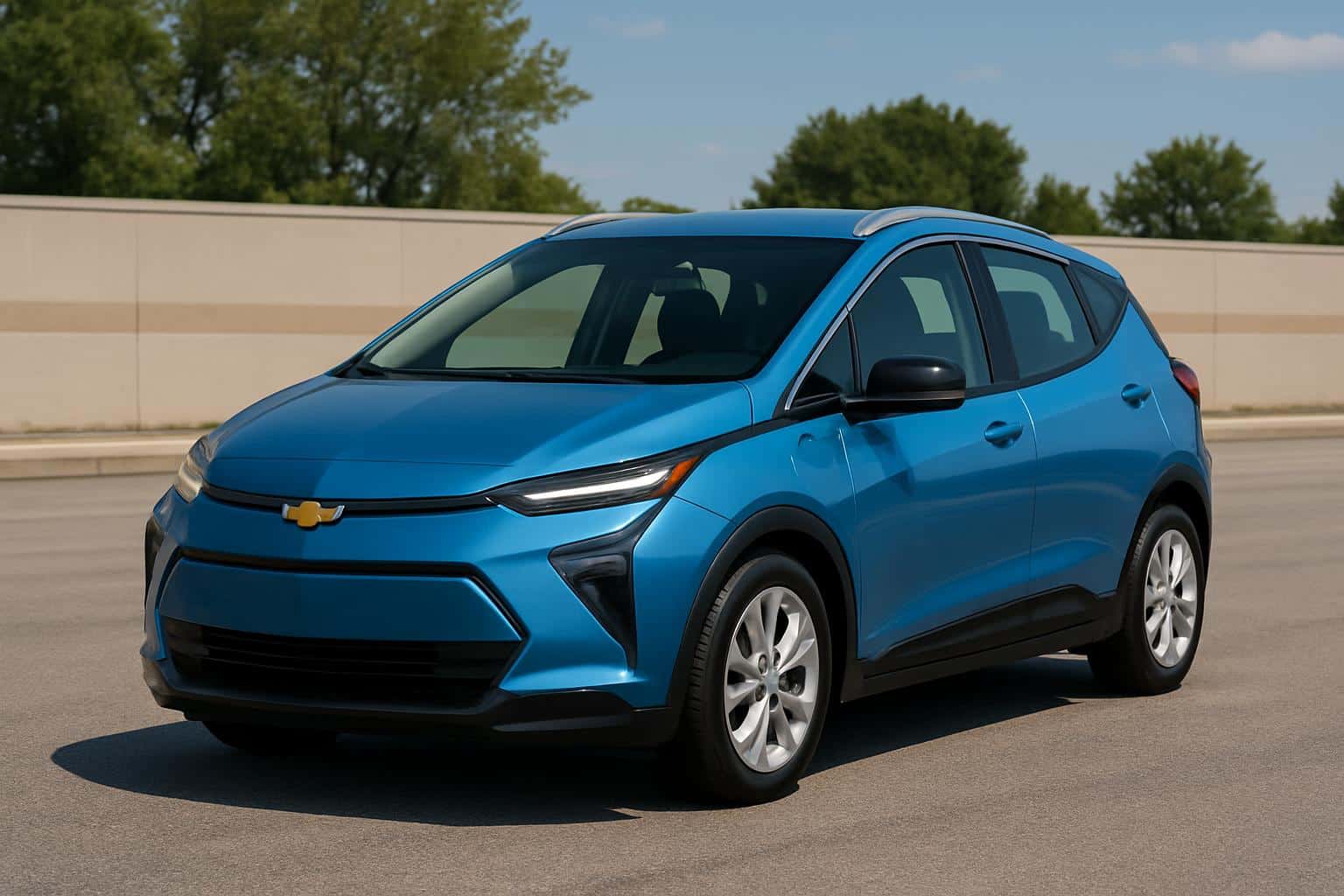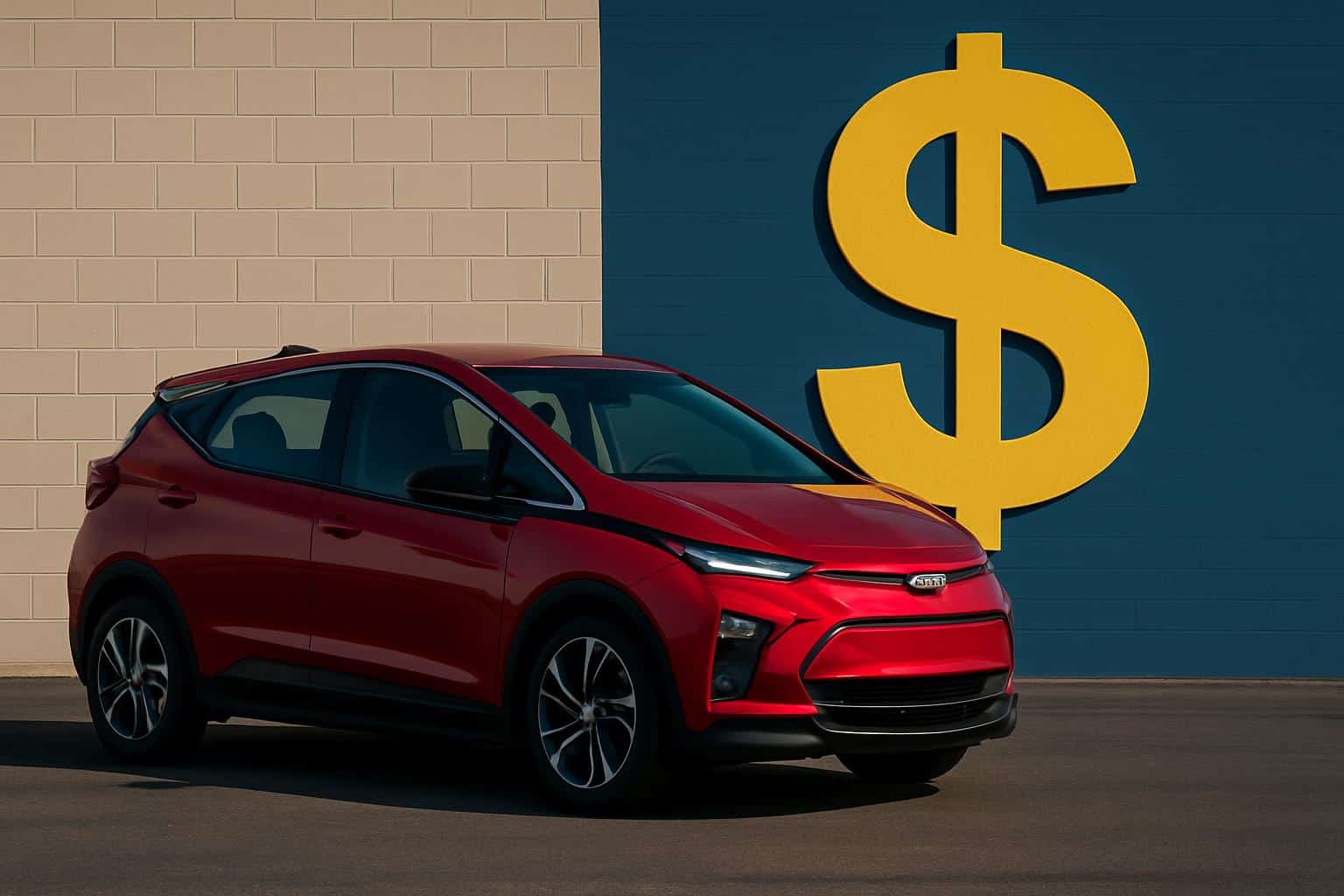Chevrolet’s reborn Bolt comes in January, initially with a base price that hits dead center on the forehead of the average first-time EV buyer. The LT is roughly $28,595, less than competing entry points and the new titleholder for the cheapest electric car in America. A sportier RS model touches down a little higher up, but the message is loud and clear: GM is lowering the price floor at a time when affordable EV options have been growing thinner.
Price And Positioning To The Mass Market
With the LT priced below $29,000 before incentives, the Bolt creeps under volume-brand competitors that usually start at or north of the line marked off by $30,000. By contrast, the Nissan Leaf in its recent model years has been the only sub-$30,000 EV available at volume. And whether the new–look Bolt will meet the eligibility requirements to be a tax credit recipient will depend on where final assembly and battery components come from — but if it is, then many buyers may find that their effective transaction price slips well below $25,000. For perspective, Kelley Blue Book has been watching average EV transaction prices in the tens of thousands higher than that — underscoring how anomalous this window of affordability is.

GM is also reviving the sizzle that made its predecessor, the Bolt, a volume leader. The company recently sold more than 60,000 in a single year — making it one of the most popular non-Tesla EVs in the U.S. Its recipe — useful range, compact-crossover-hatchback versatility, and an attainable payment — hasn’t changed at all in a short time, but the battery chemistry and charging story has.
LFP Battery, Real-World Range, And Faster Charging
The new Bolt switches to lithium iron phosphate (LFP) cells, aiming for an estimated 255 miles on a charge, a slight improvement over the old Bolt EUV. One reason LFP is winning share worldwide is that it’s relatively inexpensive and has a reputation for long cycle life. Some folks at BloombergNEF and at Argonne National Laboratory have observed that LFP’s cost advantages unlock lower sticker prices—exactly what the Bolt is angling for here.
Charging time is significantly faster than it used to be. For DC fast charging, GM has increased it beyond 150 kW now, and it also recharges more than 2.5 times as fast as the outgoing model, with about 26 minutes from a 10% to 80% charge under ideal conditions. The Bolt has a native NACS port, which gives access to Tesla Superchargers without an adapter. That combination of solid range, faster road-trip stops, and a robust public charging network significantly reduces friction that can discourage first-time EV buyers in daily life.
As ever, real-world range varies. Cold weather diminishes the total available miles for all EVs, and LFP chemistry can be more vulnerable to cold temperatures. Third-party testing from AAA and winter analyses conducted by national laboratories have demonstrated significant limitations on range in cold temperatures for the broader EV market, which highlights the importance of preconditioning and smart charging practices.
Design Tweaks and Cabin Tech for the Updated Bolt
Chevy still has the bigger EUV-sized footprint, a wise cost-control move as much as a response to American tastes for small crossovers. The RS trim provides a sportier appearance via black wheels, darker exterior accents, and special grille details. Speaking of a fresh splash, the palette has been updated with new paint options: Habanero Orange, Relic Green Metallic, and Atomic Yellow.

On the inside, it’s anchored by an 11.3-inch infotainment display that runs built-in Google features for native Maps, Assistant, and app integration. Wireless phone charging and revised driver-assist features are among the available tech extras. Chevy may not have reinvented the interior, but there’s nothing wrong with incremental improvements; these address complaints from earlier models without adding cost that would shove the car out of its affordability lane.
How It Compares With Leaf And Segment Rivals
The Bolt’s most direct price competitor is the Nissan Leaf, for years the budget baseline of electric vehicle shopping. The Leaf has been a value and simplicity play; but its legacy fast-charging standard and shorter-range models have made the lineup unusually diverse in bad ways sometimes. Whereas the Bolt’s NACS port, faster charging curve, and crossover-like packaging more closely align with what buyers expect in a new vehicle today.
Move up a bracket in price, and the Hyundai Kona Electric (or Kia Niro EV or Tesla Model 3) starts to make sense by offering compelling strengths in efficiency or performance. But they are usually priced higher to start. The Bolt offers a simple calculus: sufficient range, less-glacial charging times, and mainstream tech in an envelope with monthly outlays that more closely resemble a compact hatchback than a premium EV.
What January’s Launch Means for EV Adoption
Affordability has stubbornly remained the barrier to greater EV adoption. Policy nudges are nice, but MSRP is what really makes the needle move. By bringing back the Bolt at an under-$29,000 entry point and combining it with new charging and software, GM is seeing if price elasticity can do the lifting in a cooling but still-carving-itself-out market.
If Chevy can make enough of them and keep transaction prices right around that headline number, the Bolt — with a base MSRP just under $30,000 before any incentives and a range rated at over 200 miles — is poised to pull people new to the segment — especially those who could be described as EV skeptics across earlier waves of EV hype. The combination of LFP cost savings, Supercharger capability, and now-familiar crossover practicality means that the refreshed Bolt is one of the clearest signals yet that battery-electric life isn’t just coming down the road — it’s pulling into your driveway.

